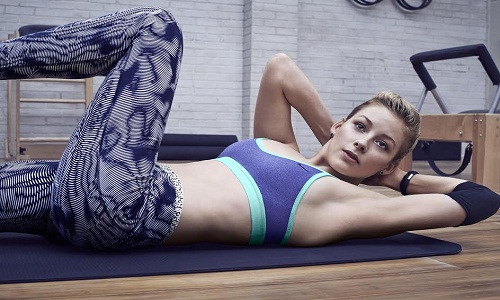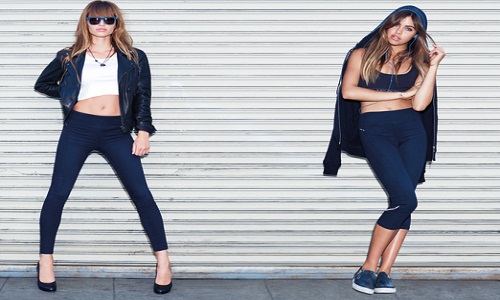FW
After accusing Welspun India of giving duplicate Egyptian cotton sheets, Target Corp has decided to terminate all business transactions with the supplier known as one of the world's biggest textile manufacturers. The retailer said it discovered last month that 750,000 sheets and pillowcases labeled Egyptian cotton were actually made with another type of cotton. The retailer immediately pulled out the items from its stores and started notifying customers that they will give them a refund on the products that were bought between August 2014 and July 2016 and sold for as much as $75.
Target has been the second-biggest customer of Mumbai-based Welspun's after Bed Bath & Beyond Inc, according to a Bloomberg data. The company makes towels, sheets, rugs and carpets for 18 of the top 30 global retailers. Its other major clients include Walmart Stores Inc, JC Penney Co and Macy's Inc. It also manufactures towels for the Wimbledon tennis championships and the Rugby World Cup.
Target has said that it was phasing out all its products from Welspun which it has used as a supplier for more than a decade. Termination of the process will take time since some merchandise has already been shipped or paid for. The withdrawal only includes two lines of Egyptian cotton bedding, and not all of its Egyptian cotton sheets are affected.
Swedish brand Hennes & Mauritz saw slightly bigger than expected July sales. There’s optimism in the second half of the year. Local currency sales at the world’s second-biggest fashion retailer rose 10 per cent in the month against a mean forecast for a nine per cent rise. July marked the tenth month of slower growth than a year earlier amid tough conditions for global clothing retail, tougher competition in H&M’s budget segment and several months of adverse weather conditions in some of H&M’s key markets.
H&M’s negative sales trend is however, widely expected to turn around from August as year-ago comparisons get easier. In August 2015 growth was a mere one per cent. July sales were probably supported by discounting and estimated like-for-like sales at the fast-expanding firm were unchanged from a year ago.
H&M has seen profits shrink for three consecutive quarters, squeezed not only by the usually big markdowns, but also by large long-term investments in online technology and new brands and by high purchasing costs in Asia due to a stronger dollar. H&M’s shares rose 2.7 per cent in early trade, trimming the year-to-date decline to less than 8 per cent.
Gap has forecast a full-year profit below earlier estimates. The apparel and accessories retailer is struggling to attract shoppers to its Banana Republic stores. Gap has been trying to reduce promotions and sell more merchandise at full price. However, shoppers are increasingly looking for deeper discounts. Chic and trendy clothes at lower prices from off-price, online and fast-fashion retailers such as H&M, Forever 21 and Inditex’s Zara are also luring shoppers away. San Francisco-based Gap has been controlling inventories and trying to replicate the success of its low-end Old Navy brand at its Gap and Banana Republic chains.
The company’s net income fell to $125 million in the second quarter ended July 30, from $219 million a year earlier. Excluding items, the company earned 60 cents per share. Net sales were unchanged from the $3.85 billion the company provided on August 8. Gap also owns the Athleta and Intermix clothing brands.
The brand opened in the United States in 1969. It came to India in 2015 and has stores in Mumbai, Delhi and Bangalore. Gap stores are a minimum of 4000 sq ft. Arvind Lifestyle Brands is the Indian franchisee partner of Gap.
With the closing down of the development of Karachi Textile City, hopes attached with the project of achieving exports worth $2 billion and generation of 80,000 jobs have been belied. The proposal of developing Karachi Textile City has been cancelled, as a special committee constituted earlier, headed by the finance secretary and comprised secretaries of the ministries of textile and planning, development and reform, proposed to the prime minister to shut the project and return the acquired land to the Port Qasim Authority.
It is learnt that absence of electricity and gas in the proposed textile city was the prime reason behind the abrupt closure of the project. The committee recommended that after handing over the land to the Port Qasim Authority, outstanding loans against the company must also be shifted to the authority.
Pest attacks, late onset of monsoon and shift to pulses and oilseeds by farmers, has resulted in planting of cotton in the country likely to fall to its lowest ebb in seven years. According Central Institute of Cotton Research (CICR) , Nagpur, cotton planting this season is unlikely to exceed 104-105 lakh hectares. As on date, cotton planting across the country is around 99 lakh hectares, according to data released by the agriculture ministry.
In 2008-09, cotton planting in the country had touched its lowest ebb at 103.9 lakh hectares and subsequently in the following years, the planting has varied between 111 lakh hectares to 128.9 lakh hectares. In 2014-15, cotton planting was the highest at 128.9 lakh hectares, KR Kranthi, Director, CICR, disclosed.
The cotton sowing window has closed for most states barring parts of northern Karnataka, Andhra Pradesh and Tamil Nadu. The addition of a couple of lakh hectares is likely in these states, the CICR director pointed out.
Lower sowing has been reported from major cotton-growing states such as Maharashtra, Gujarat, Telangana, Punjab and Andhra Pradesh, where the crop bore the brunt of pest attacks last year.
The area in Gujarat so far is around 23.13 lakh hectares, 12.5 lakh hectares in Telangana, 38.58 lakh hectares in Maharashtra and 3.5 lakh hectares in Andhra Pradesh as per figures released on August 13.
Sowing of cotton is nearly 12% lower than the area normally sown under the fibre crop by this time of the year. So far, an area of 90 lakh hectares has been planted under cotton compared to the normal area of 112 lakh hectares.
The Bangladesh Garment Manufacturers and Exporters Association (BGMEA) has received a lot of plaudits for developing the first ever Apparel Zone in Chittagong. BGMEA signed a MoU for developing the zone on January 3 this year. This move, has been jointly undertaken with the Chittagong City Corporation (CCC) and has met with a huge responses from investors. The implementing authorities also appointed consultant for the project that would create opportunity for the garment industry to have a complete green zone.
BGMEA’s first vice president Moinuddin Ahmed Mintu has claimed that almost everything for the project has been finalised and the construction work would start by late next month or early October. As per decisions, all the rules of Accord, Alliance, BNBC and others concerned will be followed during development of the zone and make the factories inside the zone compliant, he said. There are scope for developing 10 seven-storey buildings to house some 50 factories where some 30,000 workers will be able to work directly and some 100,000 others indirectly.
Construction deadline was fixed for two and a-half year from the date of commencing the work. The intended investors will deposit the money in six instalments during the construction. Construction cost of floor will be Tk 2,600 per sq-ft including expenditures for electric generator and central Effluent Treatment Plant (ETP), it has been revealed.
"Denim, world’s most popular everyday wear apparel category is likely to continue its growth story in 2016 amidst rising competition from athleisure and other bottom wear categories. A recent Lifestyle Monitor Survey reveals although active bottoms especially ‘yoga pants’ remains the most popular apparel for hanging out at home with 31 per cent usage share , but jeans are the most preferred for running errands (50 per cent), work (32 per cent) and dinner (31 per cent)."

Denim, world’s most popular everyday wear apparel category is likely to continue its growth story in 2016 amidst rising competition from athleisure and other bottom wear categories. A recent Lifestyle Monitor Survey reveals although active bottoms especially ‘yoga pants’ remains the most popular apparel for hanging out at home with 31 per cent usage share , but jeans are the most preferred for running errands (50 per cent), work (32 per cent) and dinner (31 per cent). In spite of the rising popularity of ‘athleisure’ in the US market, jeans continues to be the most available apparel item in fashion retail. In fact, it remains popular among American millennials and Gen-X compared to baby boomers when going out to dinner (35 per cent versus 21 per cent).
Denim sales rise in US despite active wear

Euromonitor apparel and footwear analyst Bernadette Kissane believes the rise of athleisure and the yoga pants has impacted growth in some markets but the denim category remains strong. Going forward, jeans are expected to return to growth with a global CAGR (compound annual growth rate) of 3 per cent to 2020. As the athleisure trend matures, consumers are likely to begin investing in jeans once more. Global denim jeans market was estimated at $58 billion in 2014, according to Technavio, a leading research and advisory company. However, the impact of athleisure has been evident on denim sales as a NPD Group’s survey reveals more than 518 million pairs of men’s and women’s jeans were sold in the US in 2015 but sales in the US were $13.1 billion last year, down 2 per cent compared to the previous year. But at the same time decline is slowing down in compared to the 4 per cent decrease in 2014.
South America, Asian markets on the rise
During the last decade the denim market has grown globally due to its increasing affinity in the emerging markets. As per Cotton Council International (CCI) and Cotton Incorporated’s 2016 Global Lifestyle Monitor Survey, affinity for denim is highest in Colombia at 79 per cent, in Mexico and Europe its 70 per cent, and lowest in India at 34 per cent). And Kissane points out even though athleisure has had an adverse impact on jeans market in the US, in other markets the full force of the trend is less severe.

Across the globe, jeans continue to be a wardrobe staple. Apart from markets like Columbia, Mexico, China has become the second largest market valued at $12 billion in 2015, Kissane says. However, unique fabrications or embellished designs for a dressy look of denim or deep colour dying can result in increased acceptance of denim in Asian markets. There is also an inclination for cotton rich denims in the global markets and a significant percentage of consumers in Colombia (67 per cent), the US (62 per cent), India (61 per cent), Europe (58 per cent) and China (58 per cent) are willing to pay more for cotton rich denims. While both China and the US continue to account for the majority of growth, emerging markets such as Asia-Pacific nations like India and Indonesia, as well as Saudi Arabia, are also picking up pace in jeans market.
And as Kissane explains denim will continue to grow as it is primarily driven by the middle class consumers with rising aspirations fuelling growth in super premium and premium sub-categories. While latest runway trends show a prominence of denim on the global arena as fashion designers and premium fashion labels like Grier Co, Michael Kors showcased denim in Fall/Winter 2016 New York Fashion Week, brands such as H&M and Zara has been aggressively expanding into Asia Pacific emerging markets.
Ethiopia has begun investing in the textile industry. The country's climate is suitable for production of animal fiber and cotton which are significant ingredients in the textile industry. The country also has a huge and young workforce.
Producing strings, buttons and other textile materials at home could help the nation reduce the import cost. One problem in the Ethiopian textile industry is low capacity of factories and companies. Capacity building is being encouraged. Companies are given help to become competitive. Finance too is a problem. Individuals who have the training and knowledge of the sector have no capital to spend. And those who do not have the understanding and educational background own the capital. The main problem is to coordinate these crucial business partners to work together in a way that’s profitable for the textile industry.
Industrial zones are being encouraged. They can provide an opportunity for technological transformation. Indigenous garment fabrics can imbibe important experience from their foreign business partners. There can be training opportunities. Brand building opportunities can arise. Modern technological equipment and transfer of knowledge can strengthen productivity and help the country set export targets.
The country is working tirelessly to boost various industries that support the journey to industrialization.
Technology and data company Engagement Labs, creator of TotalSocial™, the world's first tool to combine in-depth social listening data with comprehensive offline conversation measurement, has released the total social rankings of the top performing apparel brands in the US. And topping the list are brands like are Adidas, Nike, Reebok and Under Armour. In recent years, the US apparel industry has struggled to meet sales targets. This goes to show that brands within the space must focus on marketing efforts to ensure that they get a cut of consumer spend.
On the other hand, the industry lags behind other industries significantly in its online social performance. This is an opportunity for apparel brands to improve social media marketing to drive growth. Particular areas for the industry to focus on are online volume and especially online brand sharing: creating branded content on social pages that consumers find compelling and wish to share with others in their social network.
Based on TotalSocial rankings, athleisure brands do particularly well in both the online and offline categories. In fact, five of the brands among the top 10 fall into the athleisure category. Looking at Adidas and Nike specifically, both brands enjoy plenty of talk online and offline. It has been seen that the former has a slight edge over the latter due to its particularly high engagement with influencers, both online and offline.
The TotalSocial measurement solution is based on a proprietary scoring system built on the pillars of Engagement Labs' patented social media measurement tool and the world's only offline word of mouth tracking system for brands.
The Vietnam Textile and Garment Association (VITAS) has asked the government and authorities to review and adjust development planning for the sector. Under the current planning, though the industry's export value was targeted to reach $20 billion by 2020 but the figure exceeded $27 billion in 2015 and is expected to hit $31 billion this year. From 2010 to 2015, the industry had stable export growth of 15 per cent per year.
Vietnam's demographics – a population structure with more than double the number of working age than dependents was advantageous for expansion of the sector. Hence, the government should help the industry keep up with the country's integration and make use of the abundant resources. To help textile and garment firms take advantage of opportunities and overcome challenges brought by free trade agreements, VITAS suggested the government should update the sector development strategy that was approved by the then Prime Minister in 2008 and Ministry of Industry and Trade in 2014. The association proposed chalking out of a development strategy to 2025 with a vision towards 2040. It also asked the government, to group textile and garment enterprises in concentrated industrial parks. Currently, there are several textile and garment industrial zones in the northern provinces of Hung Yen, Thai Binh and Nam Dinh and the southern province of Dong Nai and Binh Duong, which cover a few hundred hectares each.
Finally, VITAS asked the government to allow the establishment of textile and garment industrial zones to draw domestic and foreign capital.












